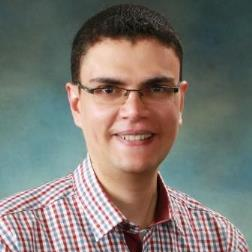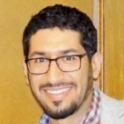Underwater Wireless Communications and Sensor Networks Technology
A special issue of Journal of Marine Science and Engineering (ISSN 2077-1312). This special issue belongs to the section "Ocean Engineering".
Deadline for manuscript submissions: closed (1 April 2023) | Viewed by 14040
Special Issue Editors
Interests: optical wireless communication; intelligent reflecting surfaces; unmanned aerial vehicles; NOMA; WPT; IoUT; 5G/6G
Special Issues, Collections and Topics in MDPI journals
Interests: wireless communications; network information theory; internet of things; green communication; sustainable cellular networks
Special Issues, Collections and Topics in MDPI journals
Interests: wireless communications; IoT; 6G; smart manufacturing
Special Issues, Collections and Topics in MDPI journals
Special Issue Information
Dear Colleagues,
In the industrial, military, and scientific world, the development of efficient and robust wireless communication links is of enormous importance. In this context, underwater wireless communication (UWC) has received renewed interest worldwide, because of its low power consumption, cost-effectiveness, low latency, compact antennas, and high bandwidth. It has become vital in numerous burgeoning applications and verticals, including real-time video transmission, telemetry, disaster prevention, surveillance environment, offshore exploration, and oceanographic studies. In the underwater environment, wireless communication has proven its stature as being more competitive than its acoustic and radio frequency (RF) counterparts. By leveraging the low-absorption window of seawater in the blue–green spectrum region, optical signals have the potential to transmit several tons in general waters. Moreover, a UWC network can be established through optical links, to further mature this technology by enhancing the flexibility, reliability, robustness, and transmission range. The ongoing developments in UWC pave the way to construct the next-generation high-performance Internet of Underwater Things (IoUT). Despite these tremendous benefits, the harsh underwater environment poses natural obstacles to optical signals, even at the right wavelengths. Thus, more research focus has been devoted to this challenging domain, resulting in impressive progress.
It is worth noting that the limited directivity and communication range of UWCs yield limited network coverage, and therefore implementing real-life UWC necessitates a proper network architecture and associated protocols. Therefore, this Special Issue aims to provide a forum to bring together the latest research innovations from both practitioners and leading researchers from diverse fields to stimulate further advancements and unlock novel applications, explore recent breakthroughs, and address the major technical uncertainties of UWC systems. We invite prospective authors to contribute articles of high-quality scientific research empowered by theoretical and experimental demonstrations of UWC. The key focus of this feature topic is to cover the most recent multidisciplinary advances and bridge the gap between theory, practice in design and applications while tailoring UWC to integrate other promising technologies. This Special Issue invites researchers to submit original research articles, and also encourages the submission of surveys or reviews regarding the current state-of-the-art in UWC. The scope of this issue may include, but is not limited to:
- The Internet of Underwater Things;
- Optical camera communication;
- Underwater optical wireless sensor networks;
- Underwater optical wireless hybrid networks;
- Beam steering and tracking for UOWC;
- Novel, smart, and energy-efficient transmitter/receiver design for UOWC;
- Reliable and self-powered network solutions;
- Vertical UOWC links;
- UOWC-assisted multimedia transmission;
- UOWC channel modeling and characterization;
- Network routing and channel estimation;
- Modulation schemes for UOWC;
- UOWC positioning and localization;
- Alignment mitigation techniques;
- Multiple access techniques;
- Advanced signal processing;
- Machine learning-based physical layer solutions;
- Networking and security challenges;
Dr. Syed Agha Hassnain Mohsan
Dr. Mohammed H. Alsharif
Dr. Khaled Rabie
Guest Editors
Manuscript Submission Information
Manuscripts should be submitted online at www.mdpi.com by registering and logging in to this website. Once you are registered, click here to go to the submission form. Manuscripts can be submitted until the deadline. All submissions that pass pre-check are peer-reviewed. Accepted papers will be published continuously in the journal (as soon as accepted) and will be listed together on the special issue website. Research articles, review articles as well as short communications are invited. For planned papers, a title and short abstract (about 100 words) can be sent to the Editorial Office for announcement on this website.
Submitted manuscripts should not have been published previously, nor be under consideration for publication elsewhere (except conference proceedings papers). All manuscripts are thoroughly refereed through a single-blind peer-review process. A guide for authors and other relevant information for submission of manuscripts is available on the Instructions for Authors page. Journal of Marine Science and Engineering is an international peer-reviewed open access monthly journal published by MDPI.
Please visit the Instructions for Authors page before submitting a manuscript. The Article Processing Charge (APC) for publication in this open access journal is 2600 CHF (Swiss Francs). Submitted papers should be well formatted and use good English. Authors may use MDPI's English editing service prior to publication or during author revisions.
Keywords
- UOWC
- internet of underwater things
- channel modeling
- modulation schemes
- security challenges







